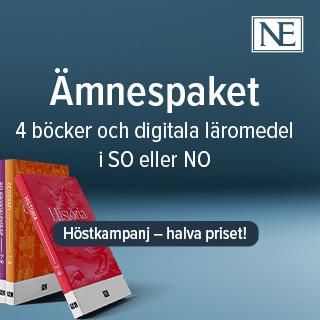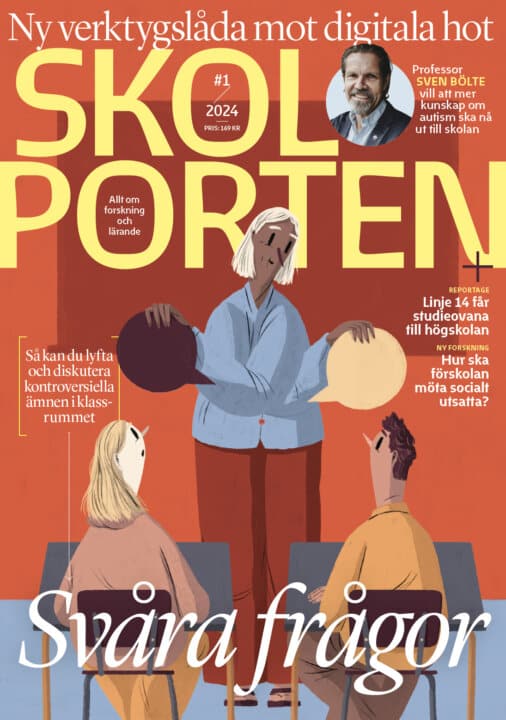Eye-gaze assistive technology for play, communication and learning: Impacts on children and youths with severe motor and communication difficulties and their partners
Yu-Hsin Hsieh har undersökt möjligheter och effekter av ögonstyrd dator för lek, kommunikation och lärande för barn och ungdomar med omfattande motoriska och kommunikativa svårigheter.
Yu-Hsin Hsieh
Professor Ralf Schlosser, Northeastern University, USA. Professor Helena Hemmingsson, Stockholms universitet. Professor Mats Granlund, Jönköping University. Associate Professor Ai-Wen Hwang, Chang-Gung University, Taiwan
Stockholms universitet
2022-10-03
Eye-gaze assistive technology for play, communication and learning: Impacts on children and youths with severe motor and communication difficulties and their partners
Specialpedagogiska institutionen
Eye-gaze assistive technology for play, communication and learning: Impacts on children and youths with severe motor and communication difficulties and their partners
Children and youths with severe motor and communication difficulties experience participation restrictions in varied everyday contexts. Adequate environmental support such as the provision of assistive technology could offer opportunities to enhance their play, learning and interactions with others. Eye-gaze assistive technology (EGAT) provides these children with opportunities to access a computer through control of eye movements, thereby to perform a range of activities for play, communication, and learning. Global research has been called for to provide more evidence on the efficacy of EGAT and to add knowledge of essential factors for implementing EGAT in everyday practices in different cultural contexts. In addition, limited evidence supports the influences of EGAT on communicative interaction between these children and their partners.
The overarching aim of this thesis is to investigate the effects and feasibility of EGAT on participation in computer activities for play, communication, and learning for children and youths with severe motor and communication difficulties and their communication partners.
Study I is part of an international multi-center EGAT intervention project. This study conducted a systematic video coding analysis to investigate the impacts of applying EGAT compared to the non-EGAT condition on dyadic communicative interaction. A total of 12 film clips from six dyads with children/youths aged 4-19 years were included. Studies II-IV are based on EGAT intervention research in the Taiwanese context. Studies II and III investigate the effects of a six-month intervention on participation in computer activities and technology usability. Study II applied a multiple baseline design across individuals in four young children aged three to six years with low eye-control skills. Study III is a case study for a young adult pupil with visual impairments. The intervention consisted of initial training to stakeholders, collaborative team meetings and individual support to facilitate the use of EGAT at home or in educational settings. Study IV employed mixed methods to examine the feasibility of the EGAT intervention with 16 key stakeholders (parents, teachers, and therapists) who supported the children/youths using EGAT in Studies II and III.
The results from Study I demonstrated that the children/youths took more initiative and tended to provide more information when using EGAT to communicate with communication partners. In addition, the partners showed decreased dominance in communication and made fewer requests to direct children’s responding behaviors in the EGAT condition, compared to the non-EGAT condition. Study II showed that four young children increased the diversity of computer activities and the frequency of computer use from baseline to the intervention phase. There was a moderate effect on the increased duration of computer use. Six of eight predefined goals in play, communication and learning were achieved. Their parents’/teachers’ ratings on children’s performance in computer activities supplemented the findings, showing a clinically important change. The case report in Study III showed that the six-month EGAT intervention enhanced the pupil’s participation in leisure, communication, and interactions with peers and led to a positive psychosocial impact. In Study IV, the stakeholders described the EGAT intervention as suitable to increase children’s autonomy and initiations and enhance their understanding of the children’s communication messages, facilitating dyadic interactions. However, they also perceived helping the children to use EGAT as demanding; hence regular team support and ease of adjustment of eye-gaze systems were essential. The needs for more flexible team collaboration, in-service education for professionals, and a loaning program in assistive technology services were identified.
Overall, this thesis indicates that using EGAT could enhance participation in play, communication, and learning for children/youths with severe motor and communication difficulties and low eye control skills. Moreover, it adds knowledge about positive impacts on dyadic communicative interactions, which indicate a transactional process in the intervention. In addition, the advantages and challenges of implementing EGAT based on the Taiwanese context are reported, which provides a crucial reference for future research and practice.
Relaterade länkar

Fritidshem
 Åk F–6
Åk F–6 Matematikångest
 Åk 4–Vux
Åk 4–Vux 






